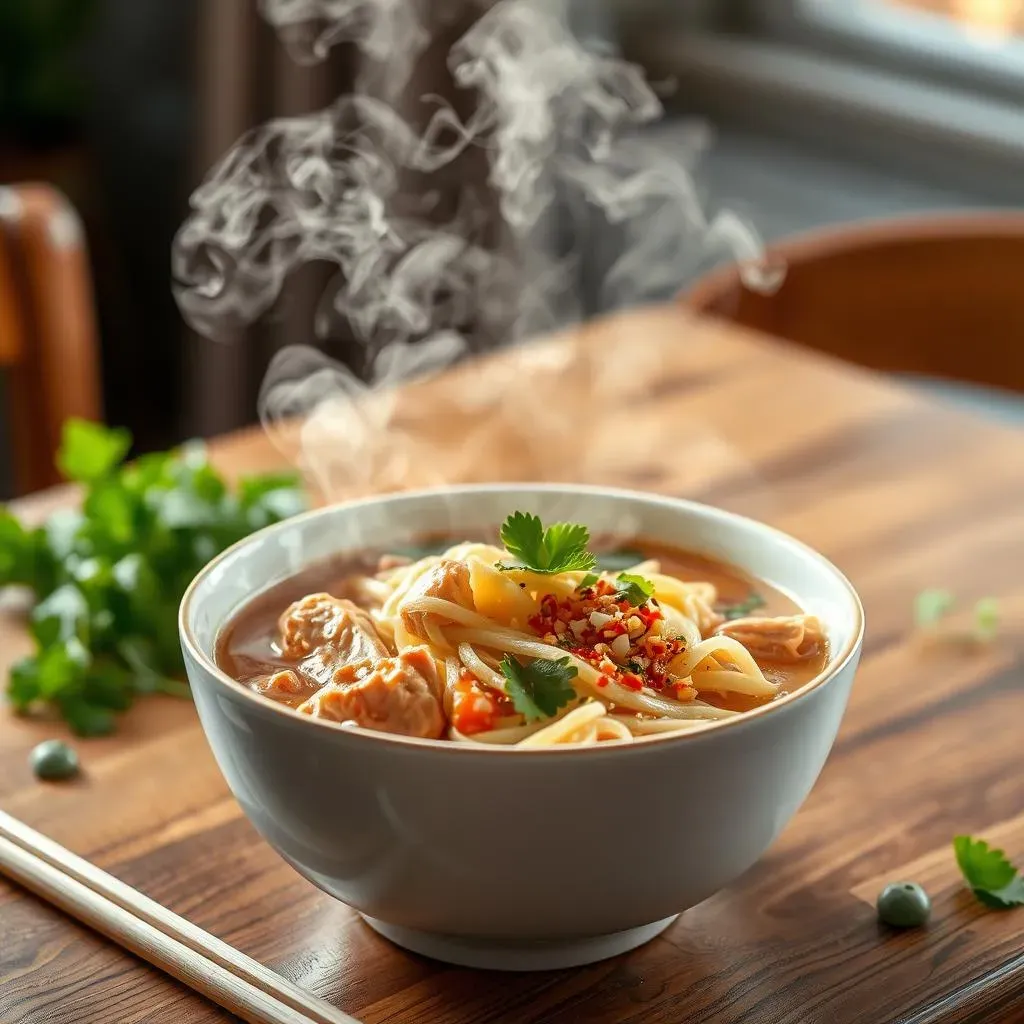Table of Contents
Let's face it: chicken noodle soup is comfort food royalty. But what if you could enjoy all that warmth and deliciousness while also boosting your protein intake? That's the magic of high-protein chicken noodle soup! This article is your complete guide to creating hearty, flavorful, and protein-packed bowls of goodness. We'll walk you through everything, from selecting the best protein-rich ingredients to exploring creative variations on classic recipes. Forget bland, low-protein soups – we’re diving into a world where chicken noodle soup is a powerhouse of nutrition. Whether you’re a fitness enthusiast, a busy parent, or simply someone looking to add more protein to your diet, this guide will teach you how to make chicken noodle soup for high protein needs a delicious and satisfying part of your meal plan. Get ready to transform your soup game and discover the surprisingly simple ways to elevate your favorite comfort food into a protein-packed masterpiece. Prepare to be amazed at how easy it is to create a healthy and delicious meal that satisfies your cravings and your nutritional goals. So, grab your spoons, and let's get cooking!
Crafting the Perfect HighProtein Chicken Noodle Soup
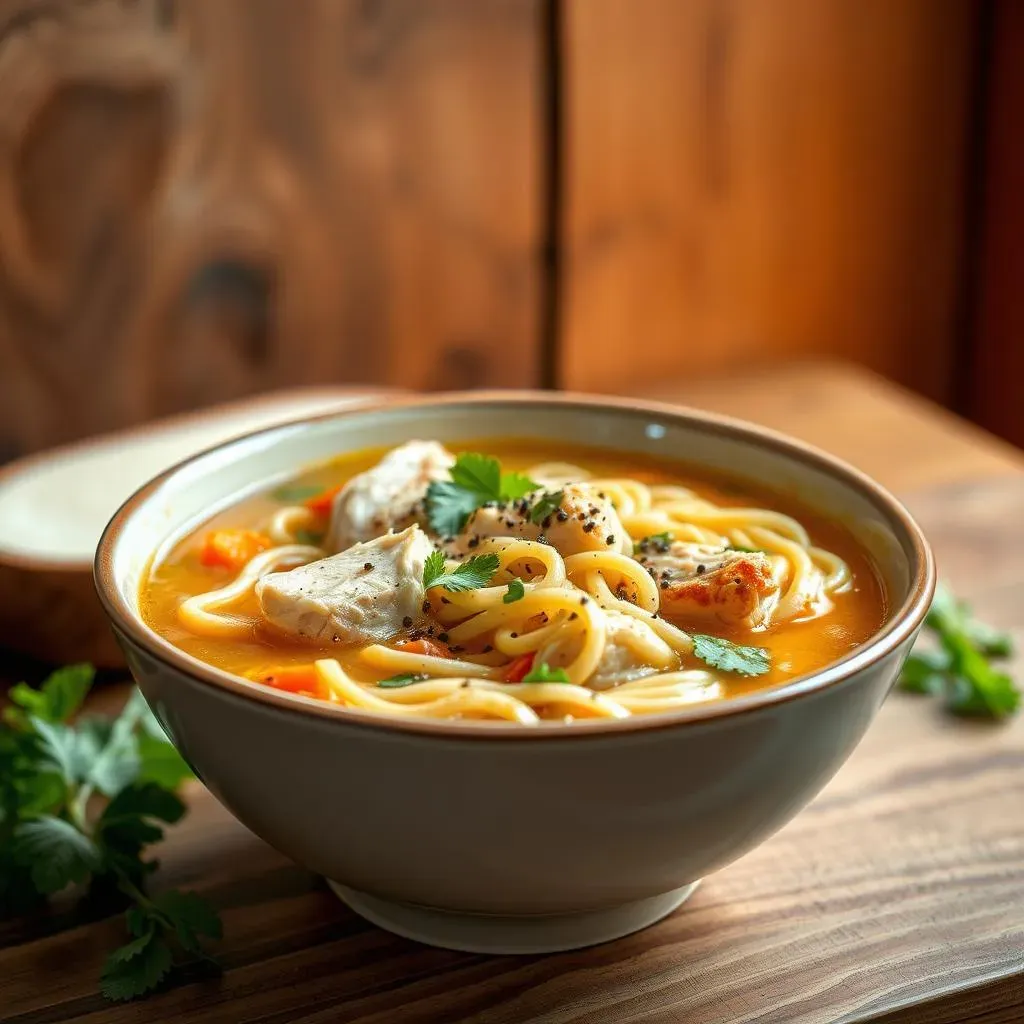
Crafting the Perfect HighProtein Chicken Noodle Soup
Broth Basics: The Foundation of Flavor
So, you want to craft the *perfect* high-protein chicken noodle soup? Let's start with the broth – it's the unsung hero of any great soup. Forget those watery, flavorless broths! We're going for rich, savory goodness. I always recommend starting with homemade chicken broth. It’s surprisingly easy, and the flavor payoff is huge. Simmer chicken bones (backs, wings, necks – the good stuff!), carrots, celery, and onion for at least a few hours. The longer, the better! This slow simmering extracts maximum flavor and collagen, making your broth incredibly rich and nutritious. You can even add herbs and spices like bay leaves, thyme, and peppercorns for an extra layer of complexity. For a quicker option, high-quality store-bought bone broth is a great alternative, just make sure to check the sodium content.
Broth Type | Protein Content | Flavor Profile |
|---|---|---|
Homemade Bone Broth | High (due to collagen) | Rich, Savory, Customizable |
Store-Bought Bone Broth | Moderate to High | Varies by brand, often savory |
Regular Chicken Broth | Low | Lighter, less intense flavor |
Chicken Choices: Protein Powerhouses
Now, let's talk chicken. This is where the "high-protein" part really shines. Forget flimsy chicken breast strips; we want substantial pieces of chicken that add both flavor and a serious protein punch. I prefer using a combination of chicken breasts (for lean protein) and dark meat (thighs or drumsticks) for added richness and flavor. Rotisserie chicken is also a fantastic shortcut – just shred it and add it to your soup. The key is to ensure you have enough chicken to make each bowl a protein-packed delight. Don't be shy with the chicken! Aim for at least 1.5 cups of cooked chicken per 6-8 servings of soup.
- Bone-in, skin-on chicken pieces for richer flavor and collagen
- Chicken breasts for lean protein
- Dark meat (thighs, drumsticks) for extra richness and flavor
- Pre-cooked rotisserie chicken for convenience
Ingredient PowerUps: Maximizing Protein in Your Soup
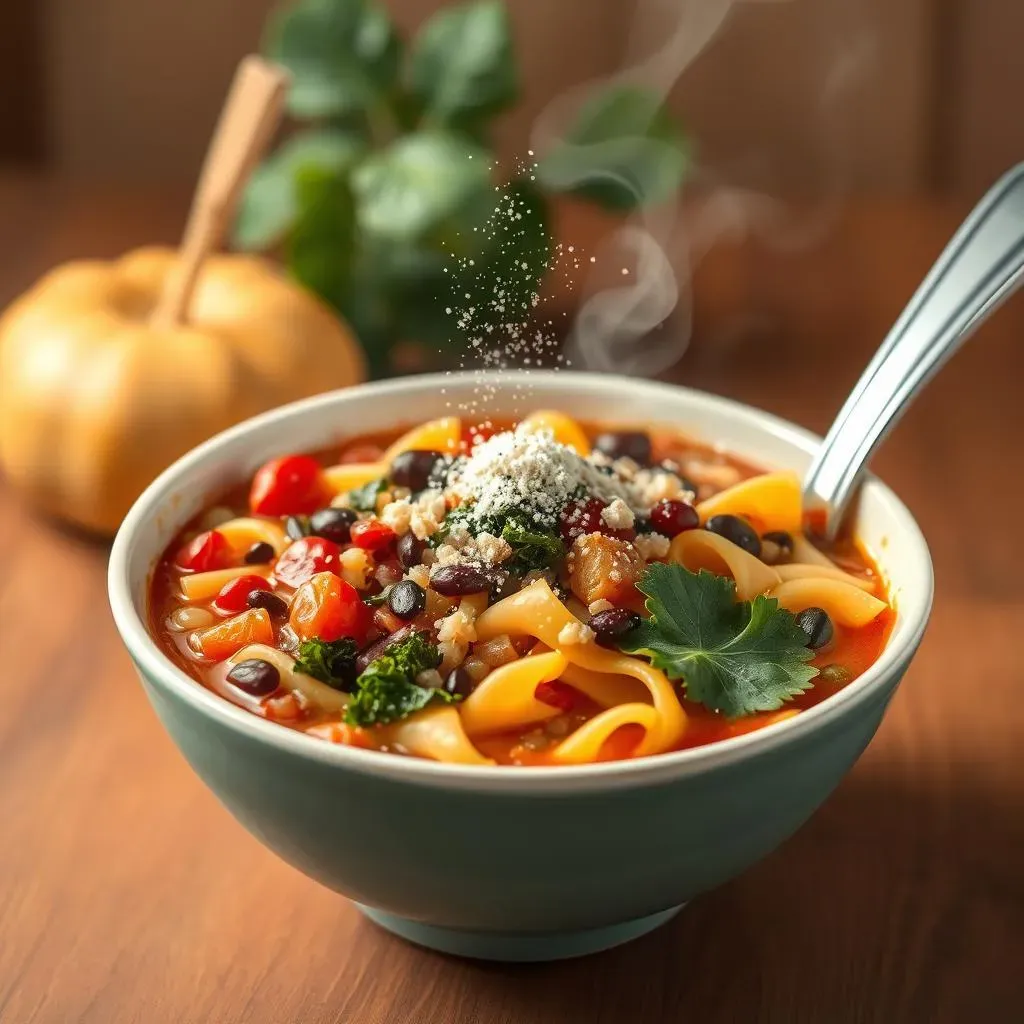
Ingredient PowerUps: Maximizing Protein in Your Soup
Noodle Nirvana: Protein-Packed Pasta
Let's talk noodles! Traditional egg noodles are tasty, but they're not exactly protein powerhouses. To really boost the protein content of your soup, consider swapping them out for high-protein alternatives. There are some fantastic options available now, including lentil pasta, chickpea pasta, and even protein-enhanced egg noodles. These noodles add a significant protein boost without sacrificing flavor or texture. Experiment with different types to find your favorite! You can even mix and match to get a variety of textures and nutrients in your soup. Remember to check the cooking time on the package, as it might differ slightly from traditional egg noodles.
Noodle Type | Approximate Protein per Serving (grams) | Texture |
|---|---|---|
Traditional Egg Noodles | 5-7 | Soft, Tender |
Lentil Pasta | 12-15 | Slightly firmer than egg noodles |
Chickpea Pasta | 10-13 | Slightly chewier than egg noodles |
Protein-Enriched Egg Noodles | 8-10 | Similar to egg noodles, but slightly more firm |
Beyond the Basics: Adding Protein Powerhouses
Don't stop at the chicken and noodles! There's a whole world of protein-rich ingredients you can add to your soup to take it to the next level. Think about incorporating beans (kidney beans, black beans, cannellini beans—all are fantastic additions!), lentils, or even a handful of quinoa for an extra protein boost. These additions not only increase the protein content but also add extra fiber, vitamins, and minerals, turning your soup into a nutritional powerhouse. Adding a handful of spinach or kale at the end of cooking provides additional nutrients and a slight boost in protein. Don't be afraid to experiment and find your favorite combinations!
- Kidney Beans
- Black Beans
- Lentils (red, green, brown)
- Quinoa
- Spinach
- Kale
Secret Weapon: Protein-Boosting Add-Ins
Want to sneak in even *more* protein without altering the taste too much? Consider adding a scoop of protein powder to your soup at the end of cooking. Whey protein powder or a plant-based protein powder blends in seamlessly and adds a significant amount of protein without noticeably changing the flavor. Just whisk it in gently while the soup is still warm, ensuring it's completely dissolved. This is a great way to increase the protein content without impacting the taste or texture of your soup. This is a secret weapon for those looking to maximize their protein intake with minimal effort!
Beyond the Basics: Creative HighProtein Chicken Noodle Soup Recipes
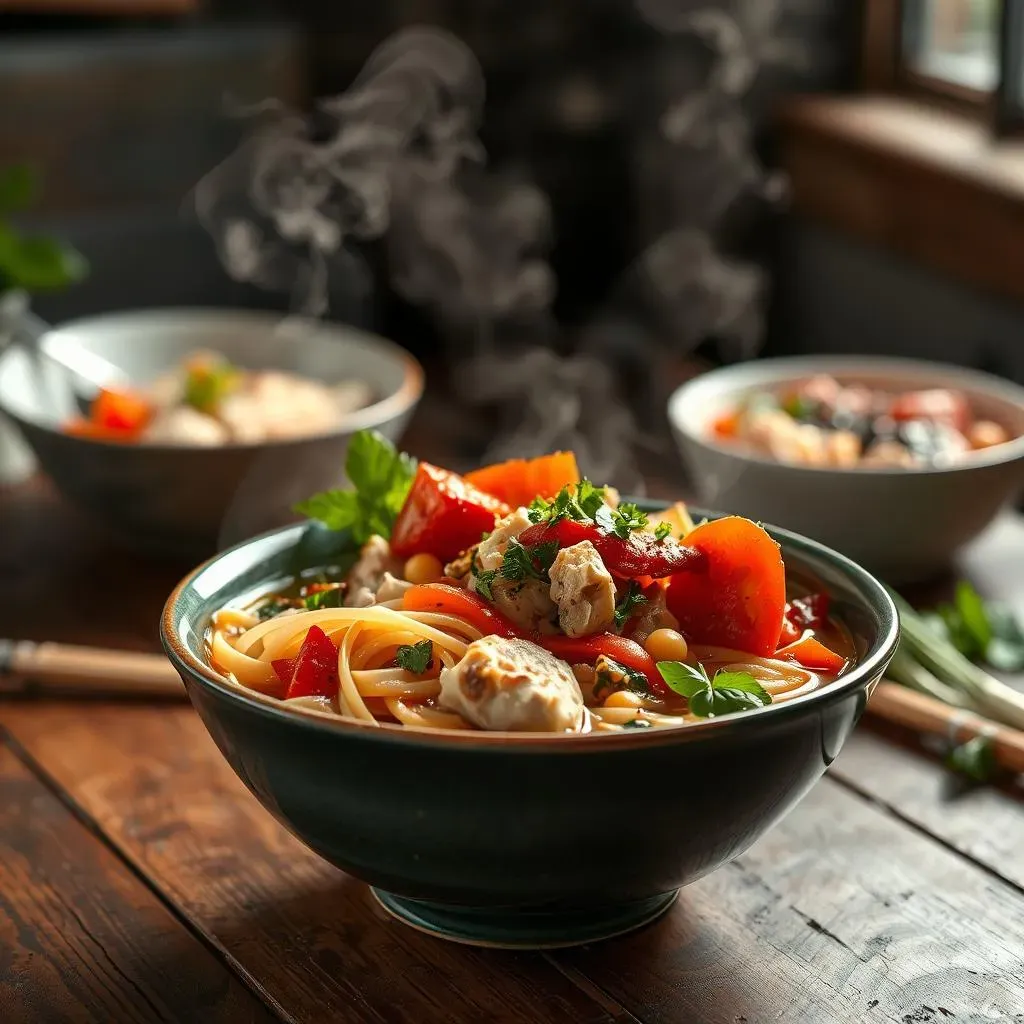
Beyond the Basics: Creative HighProtein Chicken Noodle Soup Recipes
Beyond the Basics: Creative High-Protein Chicken Noodle Soup Recipes
Okay, so we've mastered the fundamentals of high-protein chicken noodle soup. Now let's get creative! The beauty of this dish lies in its adaptability. Think beyond the classic chicken, carrots, and celery. Let's explore some exciting flavor profiles and ingredient combinations that will elevate your soup game. Imagine a spicy Thai-inspired version with coconut milk, lemongrass, ginger, and chicken, or a hearty Mediterranean twist with chickpeas, spinach, lemon, and feta cheese. We can even go international with a Japanese ramen-inspired soup featuring a rich broth, shiitake mushrooms, and soy-braised chicken. The possibilities are endless! Don't be afraid to experiment with different herbs, spices, and vegetables to create your signature high-protein chicken noodle soup masterpiece. The key is to have fun and let your culinary creativity shine. Each new variation is a chance to discover a new favorite.
Soup Variation | Key Ingredients | Protein Boosters |
|---|---|---|
Spicy Thai Chicken Noodle Soup | Coconut milk, lemongrass, ginger, chili flakes | Chicken breast, shrimp |
Mediterranean Chicken Noodle Soup | Chickpeas, spinach, lemon juice, feta cheese | Chicken thighs, Greek yogurt |
Japanese Ramen-Inspired Soup | Shiitake mushrooms, soy sauce, mirin | Chicken thighs, ramen noodles (choose high-protein varieties) |
One of my personal favorites is a curried chicken noodle soup. The creamy coconut milk base adds a delicious richness, while the curry powder provides a warm, aromatic flavor that pairs perfectly with the chicken and noodles. To make it extra protein-packed, I add a can of chickpeas and a handful of spinach at the end of cooking. It’s a fantastic way to sneak in extra nutrients without sacrificing taste. This recipe is a testament to how easily you can transform a classic dish into something unique and incredibly flavorful. Remember, the goal is to create a soup that’s both satisfying and nutritious, so have fun experimenting and finding your perfect blend of flavors!
- Consider using different types of noodles to vary textures and flavors.
- Experiment with different spices and herbs to create unique flavor profiles.
- Don't be afraid to incorporate different vegetables to add nutrients and color.
- Add a squeeze of lemon juice or lime juice at the end for brightness.
Meal Prep Magic: Making HighProtein Chicken Noodle Soup Ahead
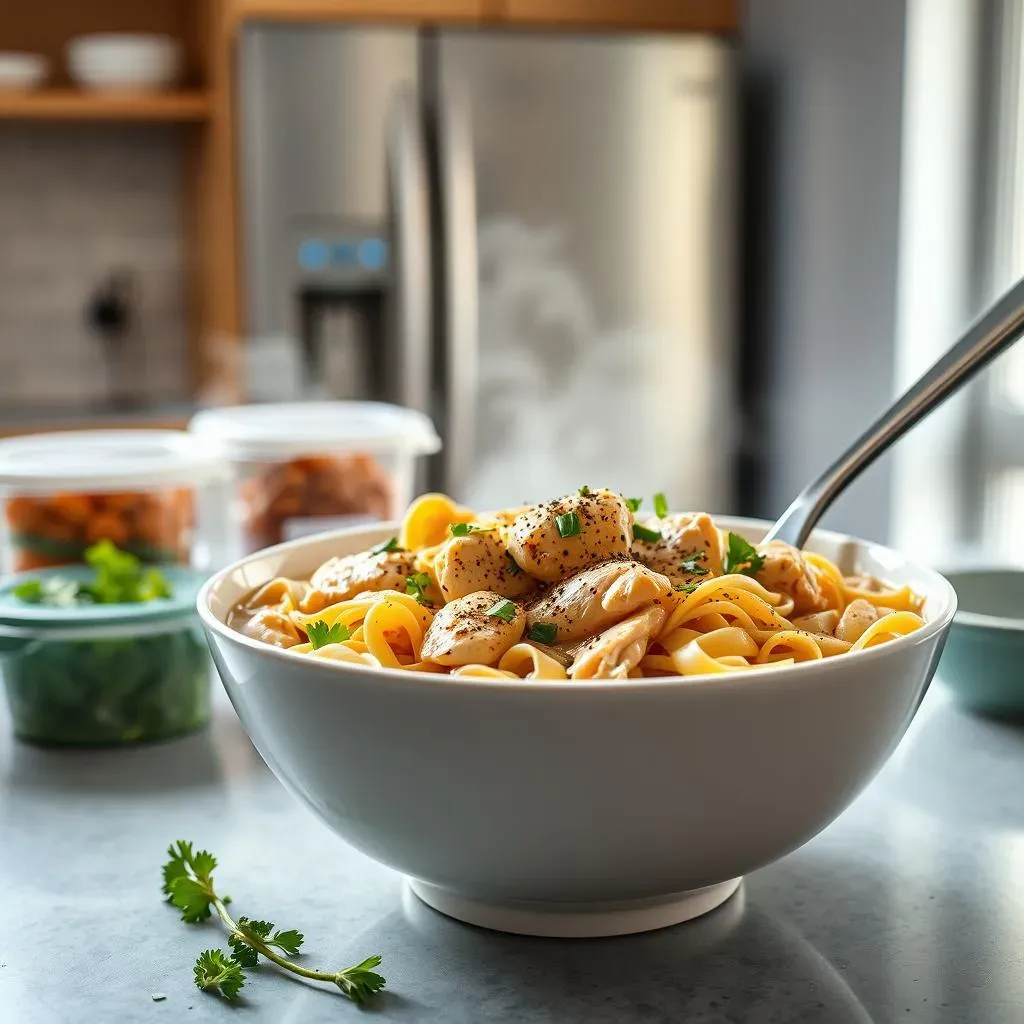
Meal Prep Magic: Making HighProtein Chicken Noodle Soup Ahead
Batch Cooking Bliss: Making a Big Batch
Let's be honest, who has time to make soup every day? That's where meal prepping comes in! Making a large batch of high-protein chicken noodle soup is the ultimate time-saver. Double or even triple the recipe and you'll have delicious, protein-packed lunches or dinners ready to go all week long. Imagine having a healthy, satisfying meal waiting for you in the fridge, ready to be reheated in minutes. It's a game-changer for busy schedules, and it's a fantastic way to ensure you're consistently meeting your protein goals. Plus, it's so much more satisfying than grabbing something quick and unhealthy. Making a big batch also lets you experiment with different flavor combinations without the pressure of making a small batch each time.
The key is to store your soup properly. Once it's cooled completely, transfer it to airtight containers. I like using glass containers because they're reusable and don't leach chemicals into your food. Label your containers with the date and store them in the refrigerator for up to 5 days. You can also freeze portions of the soup for longer storage. Just thaw it overnight in the refrigerator or use the defrost setting on your microwave before reheating. This way, you always have a healthy, protein-rich meal on hand, ready to combat those mid-week hunger pangs.
Storage Method | Storage Time | Reheating Method |
|---|---|---|
Refrigerator (airtight container) | Up to 5 days | Microwave or stovetop |
Freezer (airtight container) | Up to 3 months | Thaw overnight in refrigerator, then microwave or stovetop |
Freezing for Future Feasts: Long-Term Storage
Freezing your high-protein chicken noodle soup is a fantastic way to extend its shelf life even further. This is particularly useful if you've made a super large batch or if you want to have a stockpile of healthy meals ready for those busy weeks. Portion your soup into individual or family-sized containers before freezing. This makes it easy to grab a single serving without having to thaw a large container. Make sure to leave some headspace in the container to allow for expansion during freezing. Properly sealed containers are key to preventing freezer burn and maintaining the quality of your soup. Once frozen, your soup can last for up to 3 months in the freezer. This is a great strategy for meal prepping for longer periods, ensuring you always have a delicious and nutritious meal ready.
When you're ready to enjoy your frozen soup, simply thaw it overnight in the refrigerator. This ensures even thawing and prevents the soup from becoming overly watery. You can also use the defrost setting on your microwave for a quicker thaw, but be sure to stir it occasionally to prevent uneven heating. Once thawed, reheat your soup gently on the stovetop or in the microwave. Adding a splash of broth or water might be needed to adjust the consistency if it seems a little thick after freezing. It's always better to err on the side of caution and reheat thoroughly to ensure food safety. Enjoy your perfectly preserved, protein-packed chicken noodle soup, anytime!
- Use airtight, freezer-safe containers.
- Leave some headspace in the container for expansion.
- Label containers with the date for easy tracking.
- Thaw overnight in the refrigerator for best results.
- Reheat thoroughly before serving.
